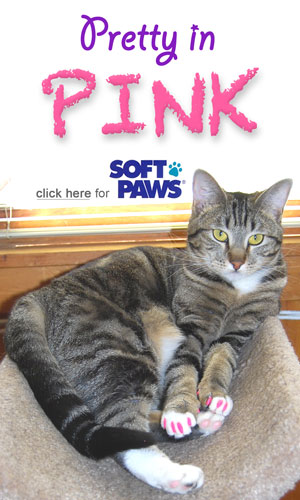3 Surprising Consequences of Declawing Cats

Declawing is used routinely in the United States as a quick way to solve problem cat scratching. Many people don't know that the surgical procedure is to amputate the cat's toes up to the first joint. A cat's claws grow out of the end of the last toe bone, so amputation is the only way to permanently remove the claws. Below are some consequences of declaw surgery in cats that might surprise you.
Declawing Is Excruciating and Declawed Cats Can Have Chronic Pain
Because declaw surgery is the amputation of multiple toes (10 if only front paws are done, 18 if all paws are done), it is extremely painful. Plus, cats are digitigrade animals, which means that they actually walk up on their toes rather than on the balls of their feet like their plantigrade human owners. So as soon as they wake up from surgery, they must walk on their amputation sites.
Declaw surgeries carry high side effect risks, including infection of the surgery sites and opening up of the wounds.
But that isn't all. Cats that are declawed often experience pain in their toes and feet for life. The surgery alters their foot structure, and can result in painful arthritis. There are also nerves and blood vessels intricately associated with the surgical area, and declawing can result in permanent nerve damage that is painful and crippling to a cat.
Declawing Often Leads to Inappropriate Urination
This can be quite surprising for people to find out, but declawed cats often develop litter box aversion. For a week or so after the surgery, regular litter can't be used in the box because it can get into the incision sites and cause infection, so shredded newspaper is often used instead. Because paper is not a normal substrate for cats to eliminate on, they can become upset and begin going outside of the box.
Also, because cats use their paws so much in the litter box, digging around to make a good spot and to cover their urine and stool, they experience pain in their box after surgery. They sometimes associate that pain with the box itself and begin to avoid it.
Another way that declaw surgeries can lead to inappropriate urination problems is that they cause extreme stress for the cat. When cats are stressed, they sometimes eliminate outside the litter box as a way to mark territory, which helps them feel better.
Having a Cat Declawed Can Increase Biting Behavior and Decrease Confidence
Cats often rely on their claws for protection and communication toward other animals and humans, to let them know when to back off. A declawed cat has that method of warning removed, so they might feel like they need to bite more quickly than they otherwise would when they feel threatened.
This removal of a primary defense mechanism can also cause a cat to become less confident and more timid about life. That can negatively impact his relationships with other animals in the home and with humans.
What Can You Do Instead of Declawing Your Cat?
If your cat uses his claws inappropriately on items in your home, damaging them, there's a lot you can do. Here are a few places to start:
- Stress causes cats to increase their scratching behavior. Decrease possible sources of feline stress in your home. Make sure there are enough sources of food, water, litter boxes, scratching posts, and that your cat has adequate playtime every day. Use Feliway or Feliway Multicat to increase the peace for your home's cats. Learn more here: "Is Your Cat a Stress Scratcher?"
- Be sure your cat has appropriate scratching posts. This is not a case of "any scratching post will do." Cats have specific needs and desires in a scratching post. They must be tall, sturdy, and covered in a material that is satisfying for cats to scratch. Carpet and sisal rope can be frustrating to scratch because those materials can catch a cat's claws and pull on their toes. Sisal fabric and heavy corrugated cardboard are great scratching substrates for cats because they are smooth to scratch, make a satisfying noise, and don't pull on their claws. Learn more: "How to Choose the Best Cat Scratching Post."
- Provide variety in your cat's scratching atmosphere. Make sure you have enough scratching posts if you have multiple cats, scatter them throughout prominent areas of your home, and vary their heights and angles.
- Use Soft Paws® to decrease scratching damage. These vinyl claw caps are easy to apply, don't harm your cat in any way, and can help protect people and belongings from cat scratches. Plus, they're cute.
Declawing your cat isn't necessary and can lead to lifelong difficulties for him.
You May Also Like These Articles:Bad Cat Behaviors Caused by Declawing
How to Fight Declawing in Your Town
Spaying and Neutering vs. Declawing: Which Surgeries Are Humane?
Alternatives to Declawing Cats






